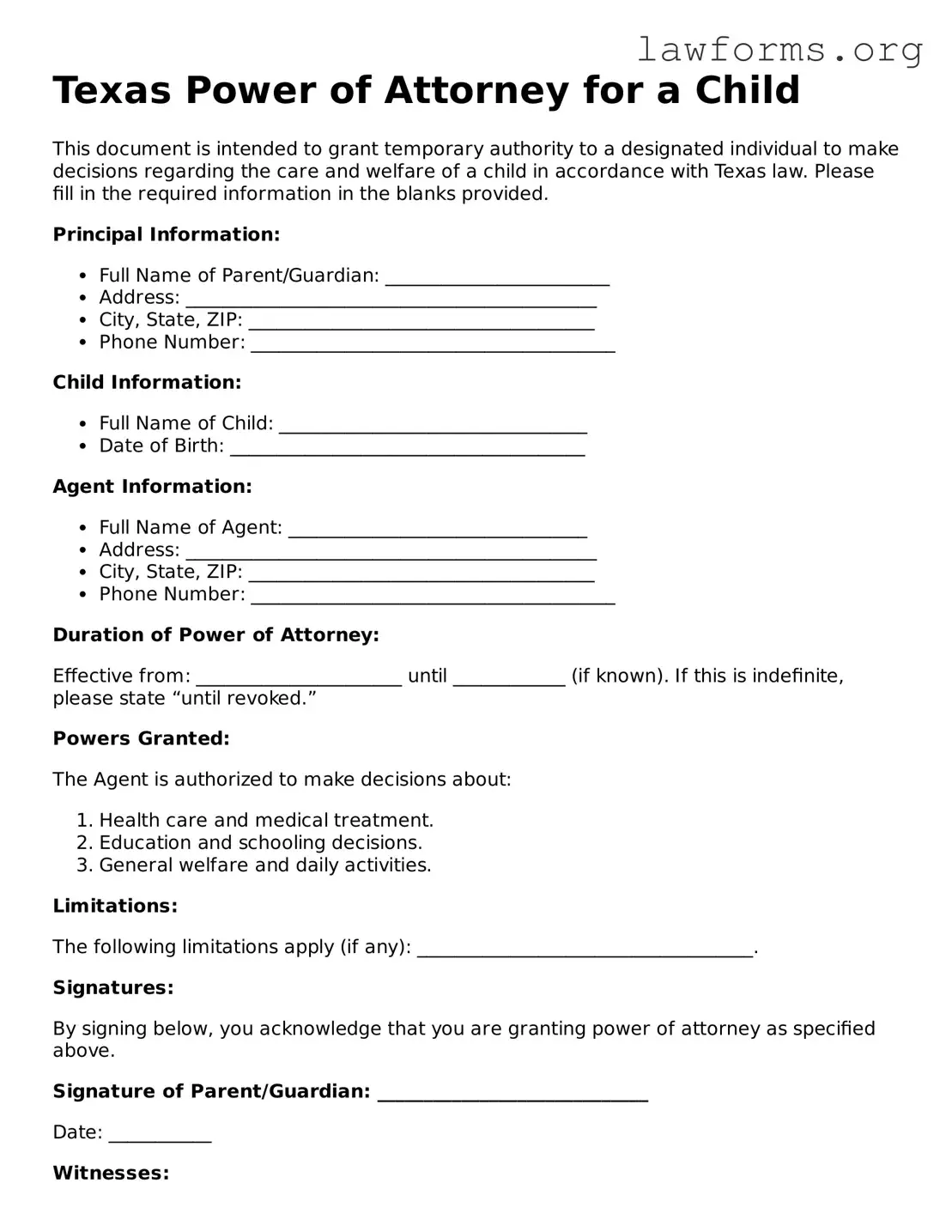Texas Power of Attorney for a Child
This document is intended to grant temporary authority to a designated individual to make decisions regarding the care and welfare of a child in accordance with Texas law. Please fill in the required information in the blanks provided.
Principal Information:
- Full Name of Parent/Guardian: ________________________
- Address: ____________________________________________
- City, State, ZIP: _____________________________________
- Phone Number: _______________________________________
Child Information:
- Full Name of Child: _________________________________
- Date of Birth: ______________________________________
Agent Information:
- Full Name of Agent: ________________________________
- Address: ____________________________________________
- City, State, ZIP: _____________________________________
- Phone Number: _______________________________________
Duration of Power of Attorney:
Effective from: ______________________ until ____________ (if known). If this is indefinite, please state “until revoked.”
Powers Granted:
The Agent is authorized to make decisions about:
- Health care and medical treatment.
- Education and schooling decisions.
- General welfare and daily activities.
Limitations:
The following limitations apply (if any): ____________________________________.
Signatures:
By signing below, you acknowledge that you are granting power of attorney as specified above.
Signature of Parent/Guardian: _____________________________
Date: ___________
Witnesses:
1. Signature: _____________________________ Date: ___________
2. Signature: _____________________________ Date: ___________
Notary Public: (if applicable)
State of Texas
County of _____________________________
Subscribed and sworn before me on this _____ day of ____________, 20__.
______________________(SEAL)
Notary Public's Signature: _______________________________
My commission expires: _____________________________
